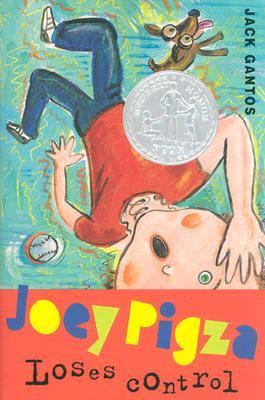Book Review – Babymouse: The Musical
1. BIBLIOGRAPHY
Holm, Jennifer L., & Holm, Matthew. 2009. BABYMOUSE: THE MUSICAL. New York:
Random House Children’s Books. ISBN 9780375843884
2. PLOT SUMMARY
Babymouse has big dreams. Lately, she has been daydreaming about fame. The new school musical is coming up, and she begins to obsess about it. When the new kid from England, Henry Higgins, showed charm and kindness by calling her “brilliant,” Babymouse gained enough courage to try out for the lead part in the musical. There was only one problem; she was up against the ferocious feline Felicia Furrypaws. She lost. At least she was selected as Felicia’s understudy. But, was this consolation prize enough to fulfill Babymouse’s longtime dream? Would she ever get a chance to be seen on stage and gain adoring fans? Even if she did get in the spotlight, would this accident-prone ambitious mouse be able to avoid disaster? Not likely. Find out the details on how Babymouse “brings down the house” in this fun-filled parody of memorable musicals we have grown to love over the years.
3. CRITICAL ANALYSIS
The dynamic sibling duo, Jennifer and Matthew Holm, collaborate in an awesomely funny take of musicals and music inspired television shows that have a familiar ring in modern pop culture. Although some of the performances mentioned are a little dated for the average middle grader of today’s times, some of the older things referenced are often parodied in current shows seen by tweens and teens. A nod was given to the oldies but goodies like Grease, Fame, and Annie. Shows that are more contemporary were also adapted, like American Idol (Babymouse Idol) and High School Musical (Elementary School Musical).
Set mainly at school, Babymouse’s wondering mind occurs at her locker, while she is in the auditorium and even during homeroom class. Her thoughts warp in and out of reality to her being the star in the musicals mentioned above. She even took a deep dark trip with “The Phantom of the Locker.” Jennifer Holm creatively includes details in Babymouse’s “script” that are a delightful homage along with teachable moments. The no-name Narrator, who humorously interacts with Babymouse through unwanted dialogue and advice, even explicitly states that “foreshadowing” occurred. Other characters like Henry Higgins (the new Hedgehog kid from England), Felicia Furrypaws (the school cat bully), the Hippo Homeroom Teacher, musical Director Miss Birdstein (bird), and many other animal species provide a multicultural cast that is just as diverse as the many faces we see in today’s school culture.
Do not assume that Jennifer’s quips and cleverly climatic storyline take the cake in this tale. Her brother adds his expertise as a graphic designer in creating an easy to follow format. Readers of any age can appreciate the thought boxes, callouts, music notes, hearts, and other whimsical shapes that make up the design in this story. All of this is accomplished with the utilization of comic-book-like frames sketched in black-and-white, with a splash of signature Babymouse pink in the background. Matthew Holm’s work in regards to color scheme exemplifies the phrase “less is more.”
There is so much more that could be said about the tactful teamwork displayed by the Holm’s. Readers of many ages will enjoy the lesson of irony that can be gleaned from the theme, even though the story ends not so happily-ever-after. Although just a fantasy, the personified characters add depth and realism in the respect that many will be able to identify with having high aspirations. This is one book that will have audiences bidding for an “encore.”
4. REVIEW EXCERPT(S)
BOOKLIST: “The brother-sister creative team hits the mark with humor, sweetness, and characters so genuine they can pass for real kids.”
SCHOOL LIBRARY JOURNAL: “Babymouse is spunky, ambitious…”
KIRKUS: “Emergent readers will cheer ‘Babymouse!’”
5. CONNECTIONS
- A few of the musicals mentioned are older and would need adult guidance to make connections. Video clips of the works could be shown as students discuss characterization with adults that saw the original works, as well as just plain old conversation to foster a love of reading.
- Have students pair up as Jennifer and Matthew Holm did to create a mini-version of a graphic novel. Students will collaborate on storyline and basic design to create an original piece. It will be interesting to see what will be inspired as the old saying “two heads are better than one” is tested.
- Take the time to check out all the books in the Babymouse Series:
#1 Babymouse: Queen of the World
#2 Babymouse: Our Hero
#3 Babymouse: Beach Babe
#4 Babymouse: Rock Star
#5 Babymouse: Heartbreaker
#6 Babymouse: Camp Babymouse
#7 Babymouse: Skater Girl
#8 Babymouse: Puppy Love
#9 Babymouse: Monster Mash
#10 Babymouse: The Musical
#11 Babymouse: Dragonslayer
#12 Babymouse Burns Rubber
#13 Babymouse: Cupcake Tycoon
- Author and Babymouse websites:
Other resources used:
http://www.kirkusreviews.com
This book review was created as an assignment for a course at
Texas Woman’s University.




